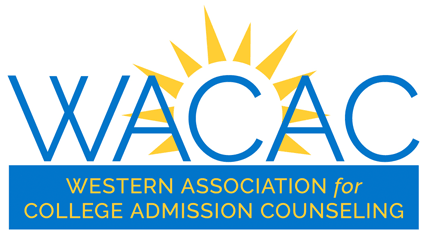The priorities for the 2014 Legislative Conference were as follows:
ONE: Include School Counselors in the implementation of Common Core Curriculum Standards and Smarter Balanced Assessments in K12 public schools.
The Common Core Curriculum Standards (CCCS) were developed nationally to prepare students for college and career. They do so by integrating the practices of reading, writing, speaking and listening, language, and discrete mathematical concepts across the subject areas of language arts, mathematics, history, social studies, science, and technical topics (Common Core State Standards Initiative 2012). New Smarter Balanced Assessments will measure the extent to which unique local programs help students reach Common Core Standards. Implementation of the CCCS and Smarter Balanced Assessments in California will ask a great deal of local education agencies throughout the state, who will face new freedom and new responsibility to develop methods of teaching and learning to prepare all students for college and careers.
The integrated approach of Common Core will require schools to think beyond educating students in one subject, in one class, or in one grade at a time, yet few educators have been trained to work in this manner. Certified K12 School Counselors are uniquely trained in graduate-level programs to develop learning pathways that prepare students for college and careers, and their skills can help fill the gap of local-level educational leaders with the skill set to implement Common Core.
The 2013 Budget (Assembly Bill 86, Section 85, Chapter 48, Statutes of 2013), provided $1.25 billion in flexible funding to help education agencies implement the standards. Additionally, the Governor has proposed that $46.5 million be made available in 2014-15 to help education agencies integrate Smarter Balanced Assessments. WACAC supports the provision of these implementation funds. These resources, and any others that are provided as flexible sources of funding by the state for the purpose of implementing Common Core Standards or Smarter Balanced Assessments, should be available to districts to support the preparation and mobilization of school counselors as a key resource in successful implementation.
TWO: Restore Pathways to Higher Education for All Students. Devote Resources to Increasing Community College Transfer Rates and Community College Transfer Support Services, including Counselors.
The demographics of California’s student population are rapidly changing. Students of color now comprise 68 percent of the population in California public schools. Affordability has also changed the landscape of higher education, as the expanding costs of college and career training have put this goal out reach for many students and their families. As the state works to restore funding for higher education, programs that support the neediest students should be prioritized.
California Community Colleges (CCCs) serve as a point of first entry for many students, and access to courses and financial support through community colleges should be a top priority for funding restoration. WACAC supports the Governor’s proposal to increase community college funding by 11.4 percent in 2014-15, and his call for CCCs to develop programs to increase transfer rates to UCs, CSUs, and other 4-year institutions. Transfer Support Services and community college counselors are essential to help students identify transfer goals and pathways for transfer or matriculation through career training or certificate programs. Yet years of budget cuts in community colleges have left students with little access to transfer information and to college counselors. Devoting resources to increasing the number and availability of college counselors and transfer services in community colleges is critical in meeting the goal of improved transfer rates and matriculation through career training programs.
THREE: Support “Pay it Forward Pay it Back” in California.
WACAC supports AB 1456 (Jones), which commissions a study to consider the feasibility and implementation of “pay it forward, pay it back” tuition programs in California. Under such a financial aid system, students pay no up-front costs for a college education, but contribute 2-4% of their income to a college trust fund for a set number of years after they graduate. This may be one successful method for the state to maintain our investment in higher education, and policy makers should consider several questions related to the feasibility and implementation of “pay it forward, pay it back.”
- How would “pay it forward” proposals overlap with federal loan programs?
- How would “pay it forward” proposals overlap with grant programs?
- How would “pay it forward” proposals alter states’ approach to investing in higher education?
- How would “pay it forward” proposals be funded? Would they combine public investment with payments by users? Would users-only bear the burden?
- Would “pay it forward” proposals include books and supplies, or only tuition?
- Would “pay it forward” proposals be 100% participation or voluntary opt-in?
- How would “pay it forward” proposals alter transparency for students and families about financing higher education?
- How would “pay it forward” proposals take into account further increases in the cost of college? Inflation? Demographic shifts?
- How would “pay it forward” proposals take into account students who transfer to different colleges, states, drop out altogether, or leave the workforce?
- Would all students have the same agreement under “pay it forward” proposals or could some students have different agreements?
As policy makers consider these and other important questions related to ‘pay it forward’ proposals, the guiding principal must be a commitment to protecting students’ access to higher education in California.
